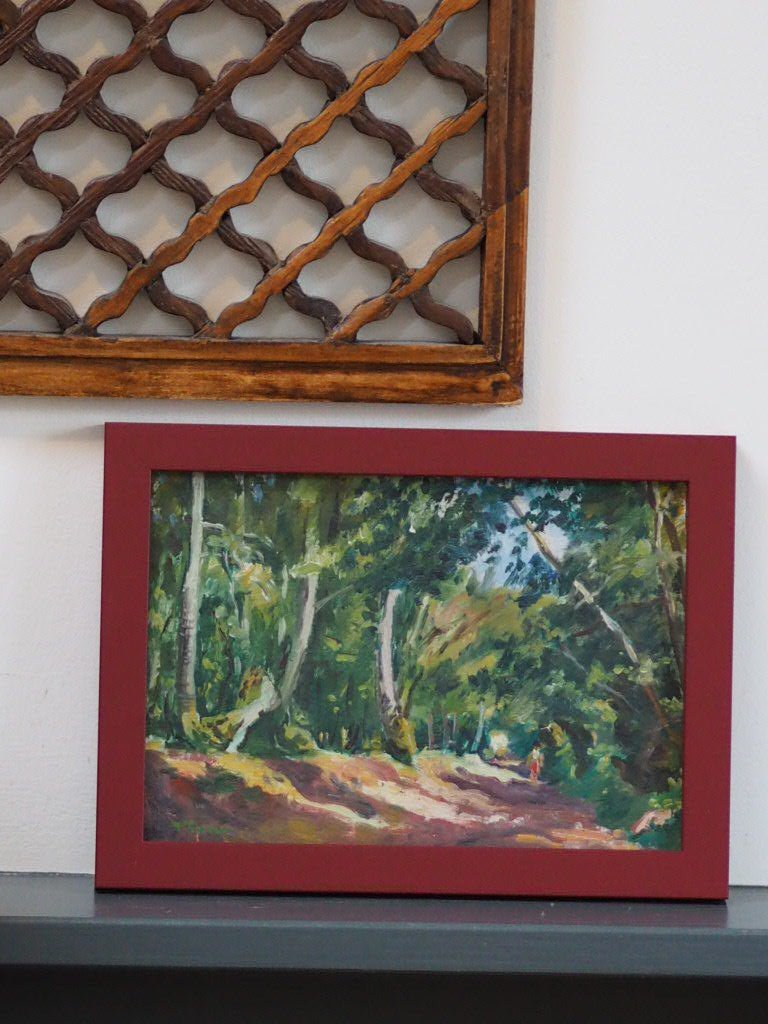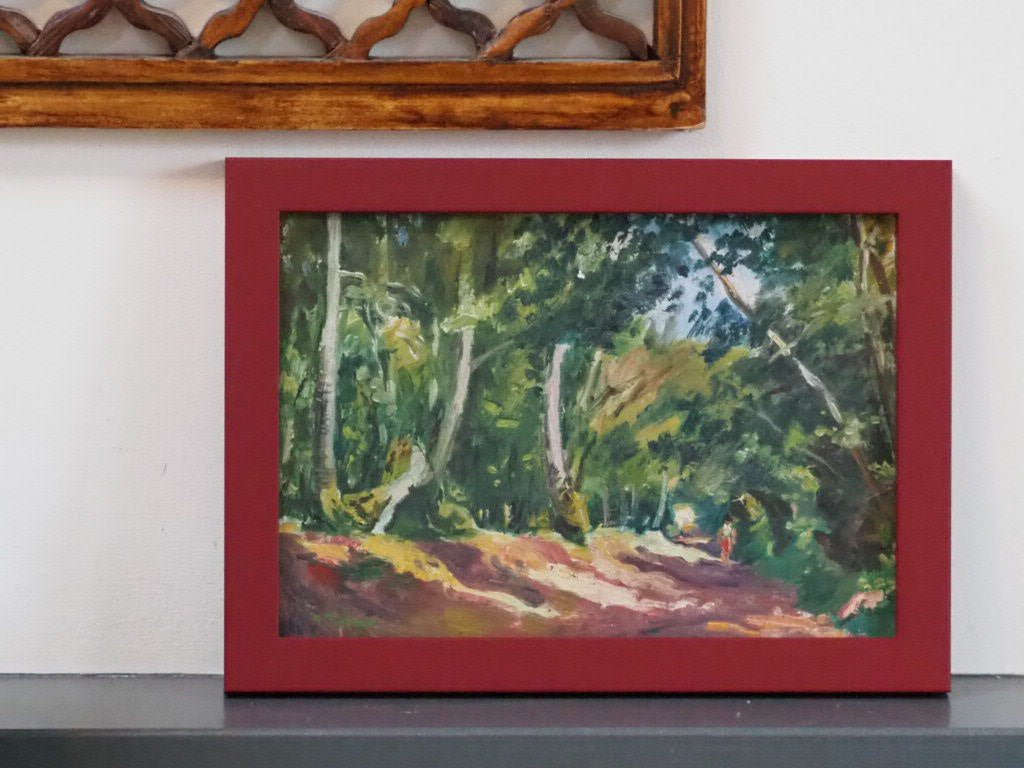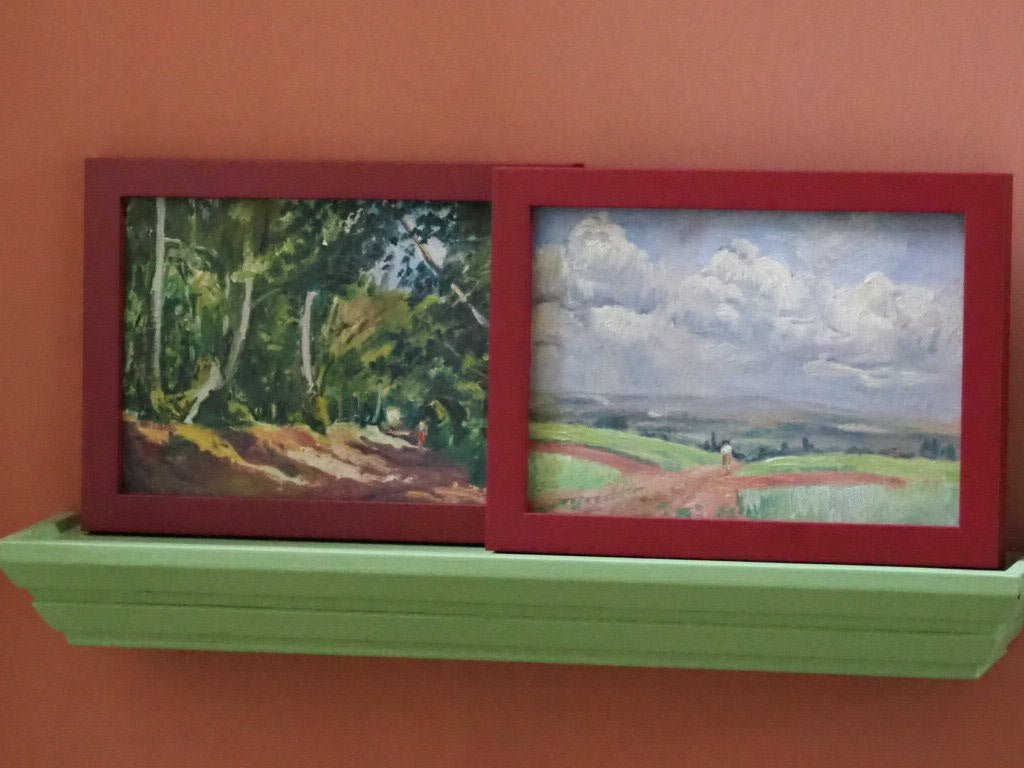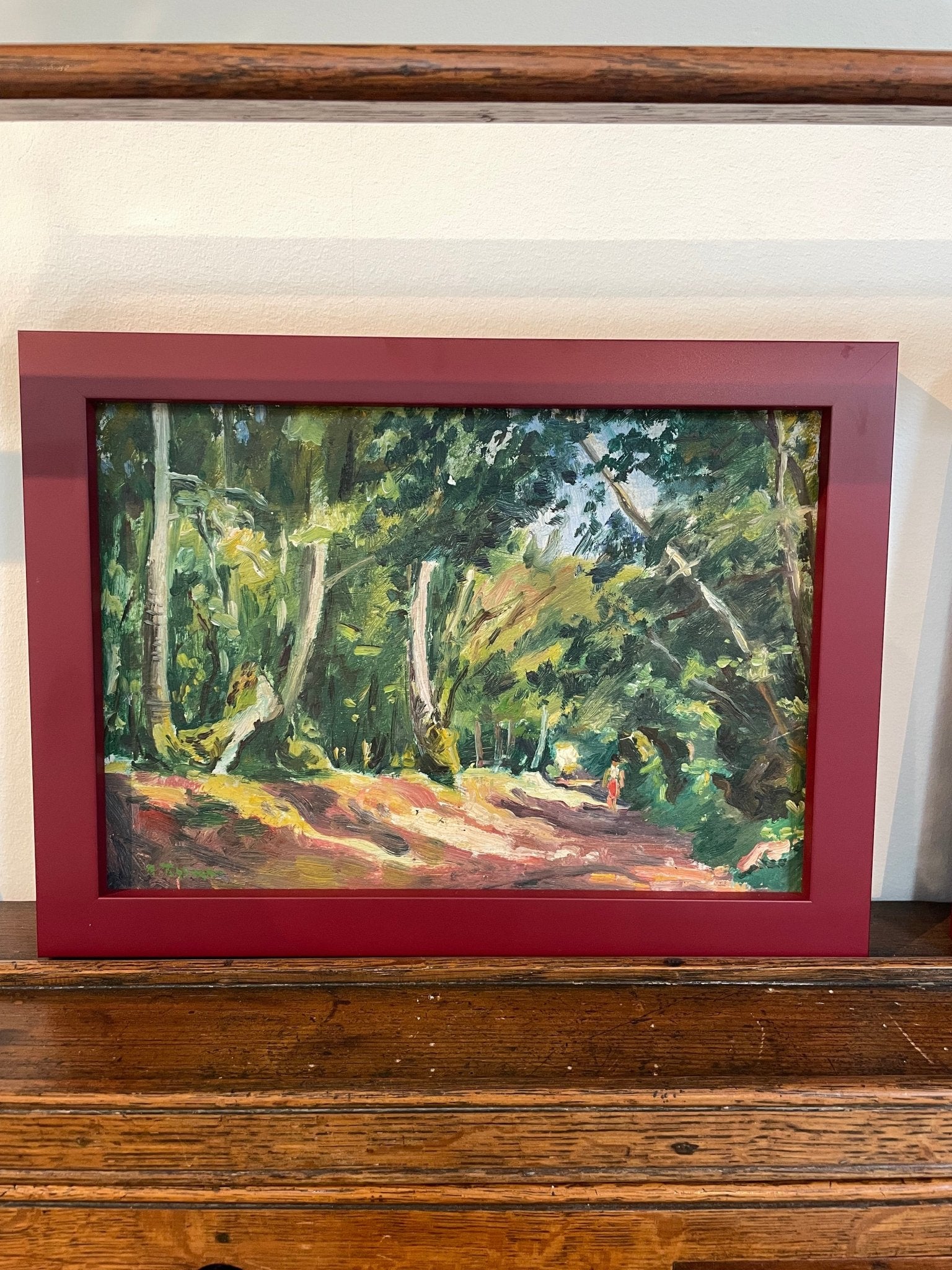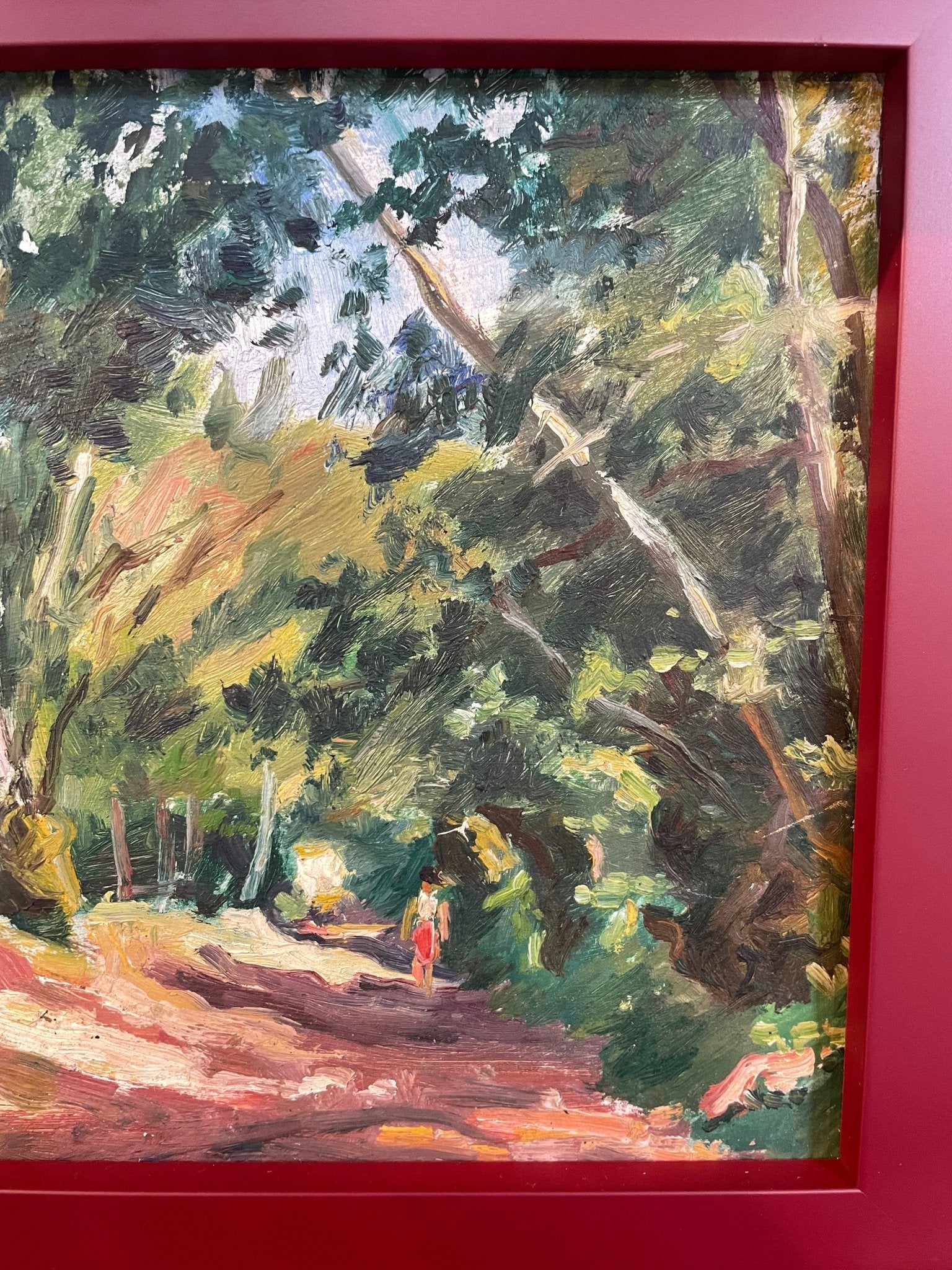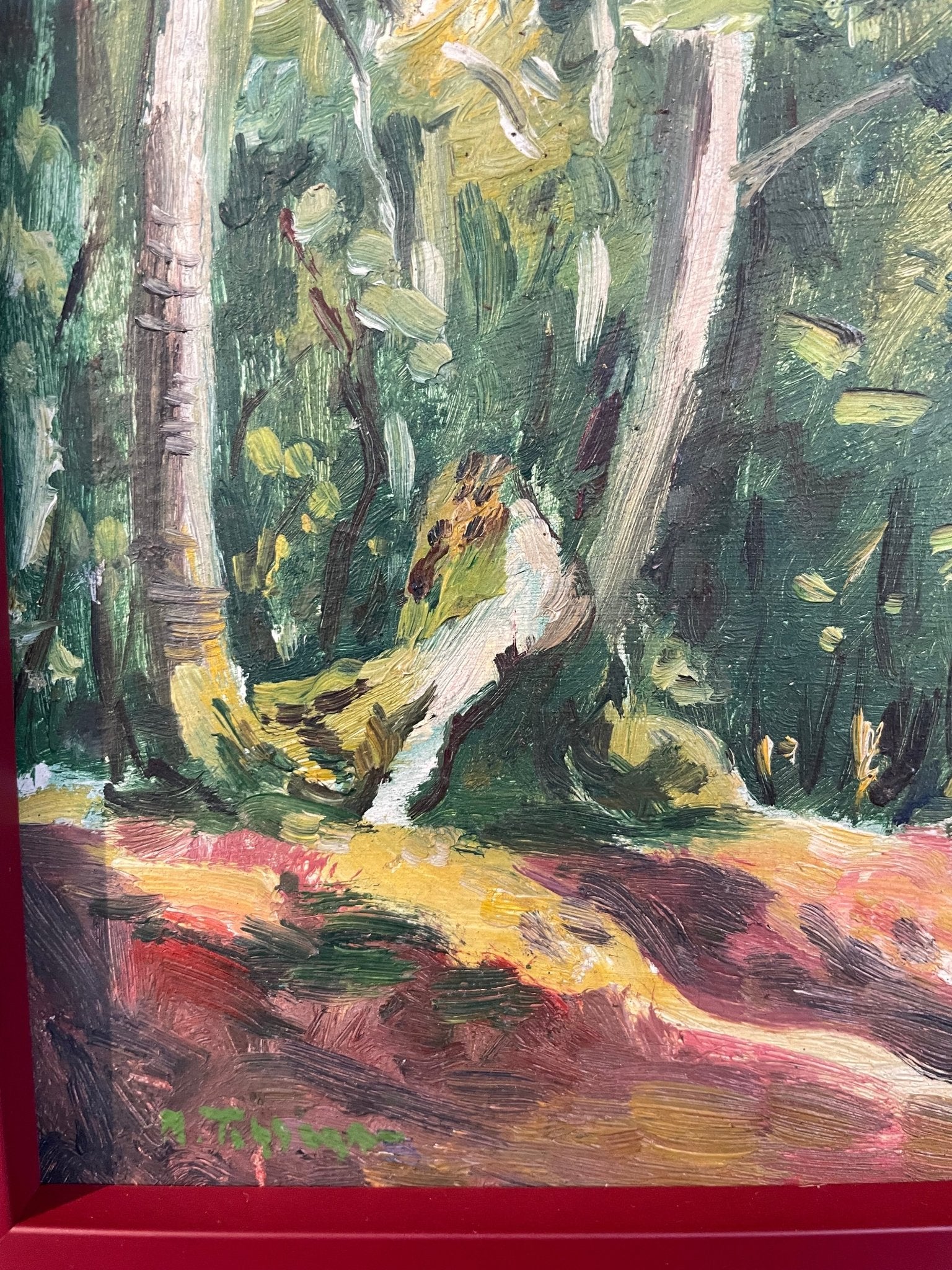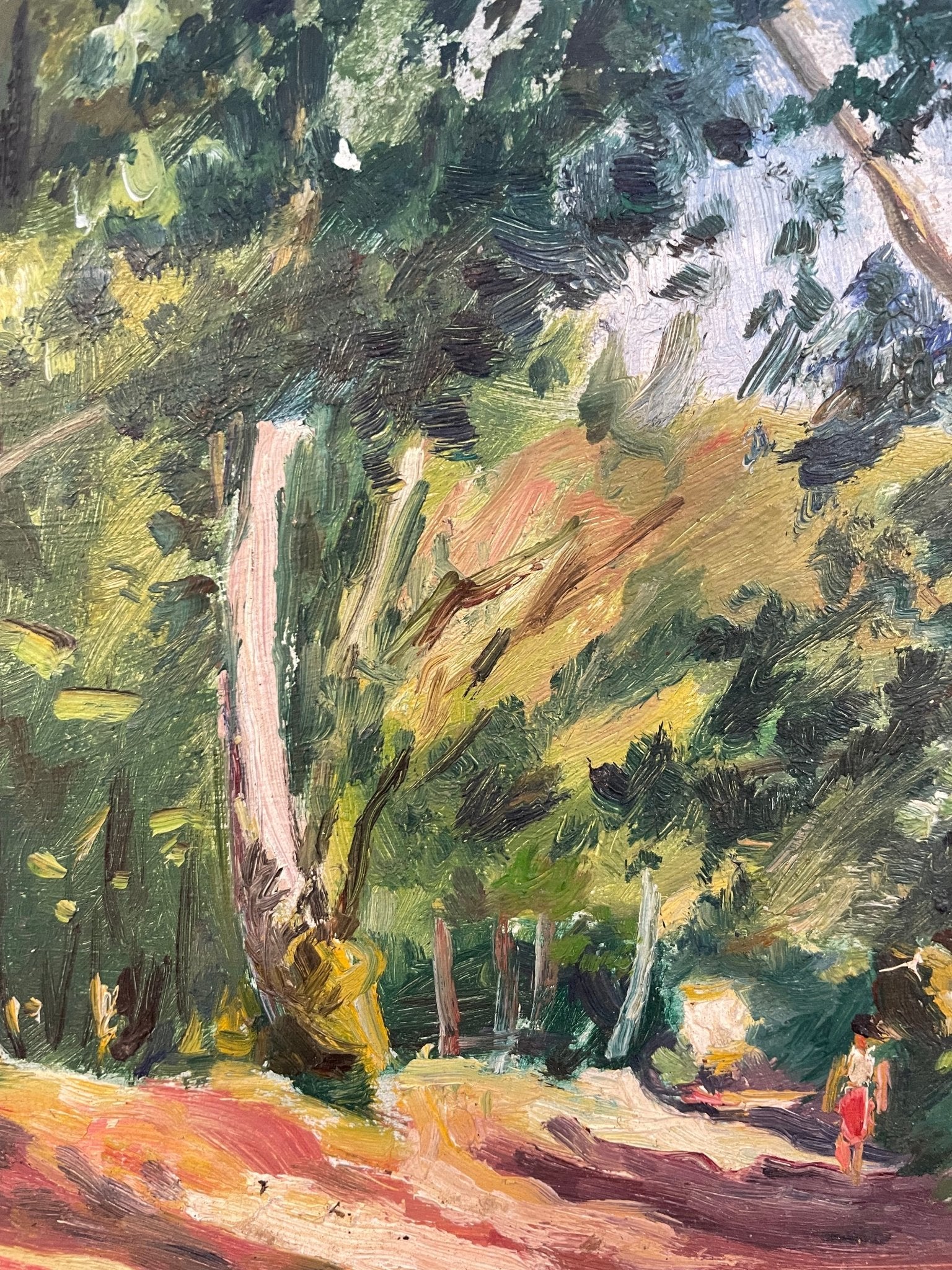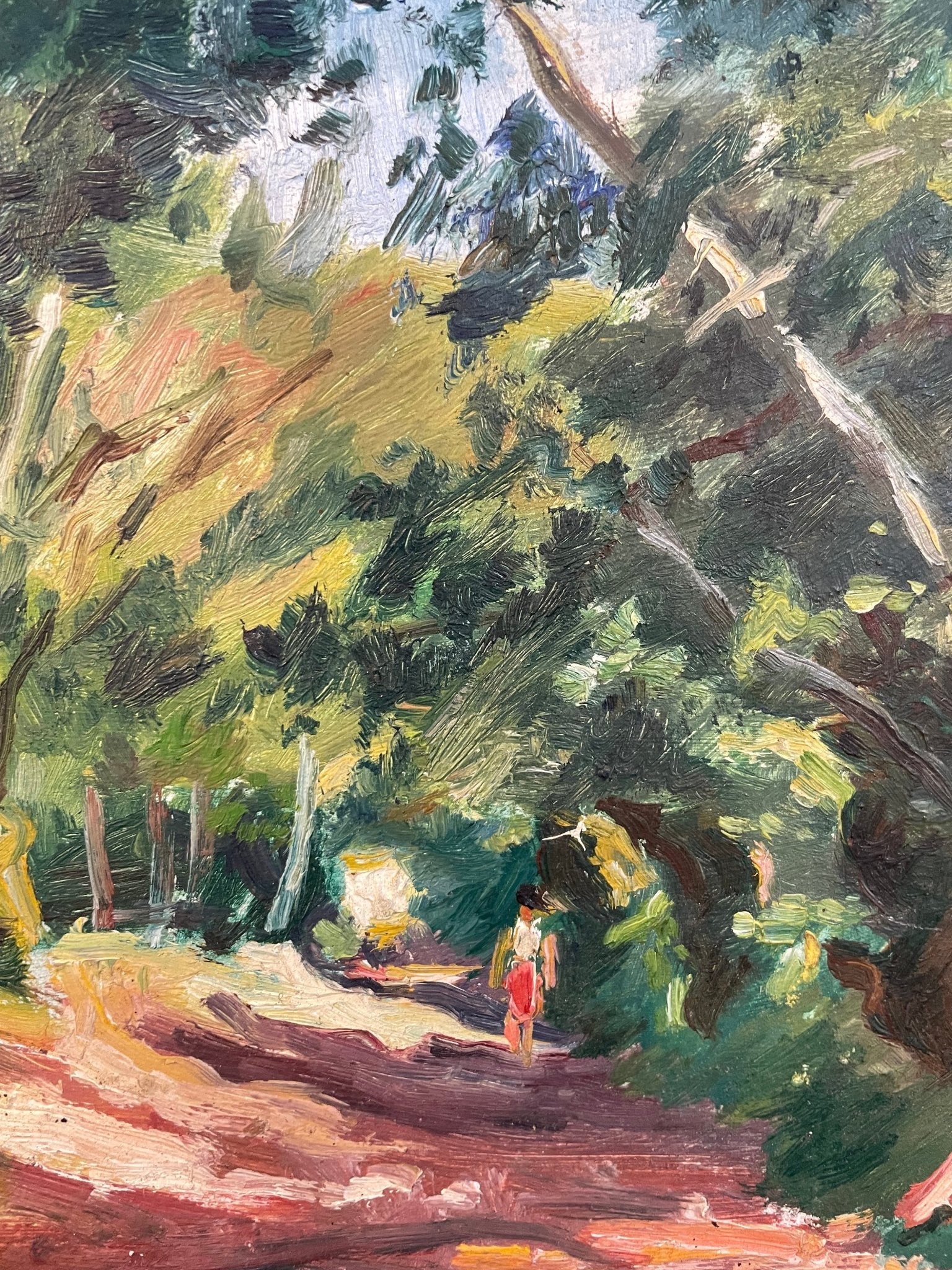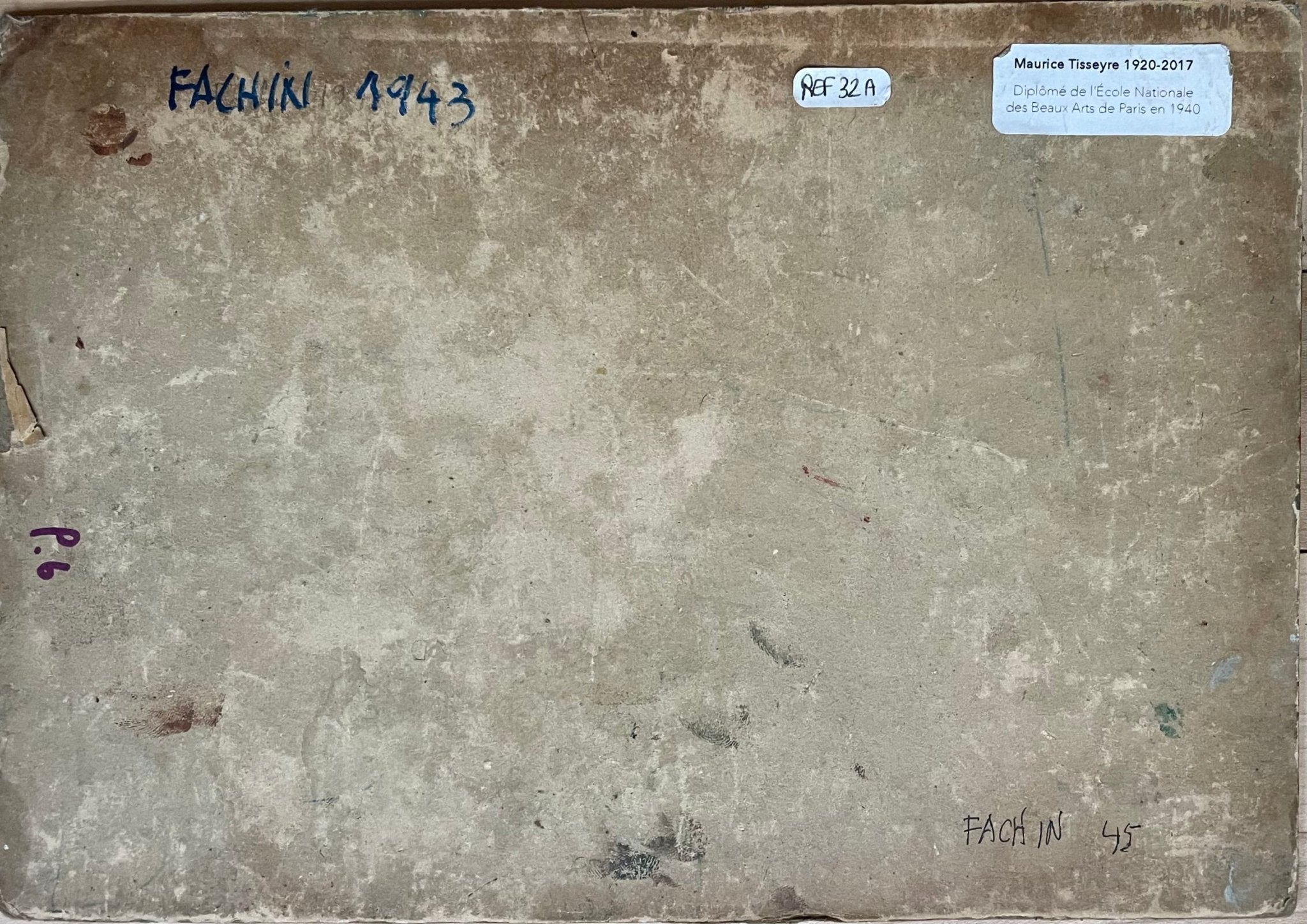Fachin oil painting Maurice Tisseyre
Fachin, 1943, signed Maurice Tisseyre (left bottom hand corner)
Oil on thick board , 30.4x 22.2 cm
Painted in 1943, at the height of the Second World War, Fachin is a moving study of serenity amid uncertainty. The setting is the village of Fachin in the Nièvre region of France, surrounded by dense woodland. Through a play of dappled light and shadow, Tisseyre conveys the rhythm and stillness of the forest — the kind of place where time seems to pause.
At the centre stands a female figure (most probably his wife, they married in 1943), turned toward the painter. Her presence anchors the landscape, giving it intimacy and a human scale. Despite the historical moment in which it was created, the painting radiates peace — as though nature itself offers refuge and renewal.
The soft palette and deft brushwork reveal Tisseyre’s early command of light, already a hallmark of his later landscapes. Fachin invites contemplation; it feels both grounded and timeless, a quiet ode to endurance and beauty.
Maurice Tisseyre was born in 1920 in Estagel, in the Pyrénées-Orientales region of southern France. Trained at the prestigious École des Beaux-Arts in Paris, he became known for his landscapes and seascapes — works that captured light with rare sensitivity and emotional depth.
Over his long career, Tisseyre’s work evolved between realism and lyrical impressionism. His subjects ranged from the vineyards of the Languedoc and the harbours of the Mediterranean to Venetian canals and Parisian riverbanks. His technique combined structure and spontaneity — he painted with clarity, but always with warmth and feeling.
He exhibited regularly in major Parisian salons, including the Salon des Artistes Français, Salon des Indépendants, and the Biennale de Menton, and earned multiple honours, including a travel award to Tunisia and a medal at the Salon des Artistes Français. He also worked on religious commissions, designing church decorations and Stations of the Cross.
For many years, he lived and worked in Montmartre, in the “Cité Montmartre aux Artistes”, sharing a studio with his wife Janine Marca, also a painter and art educator. Tisseyre’s legacy lies in his ability to paint light — not just as illumination, but as emotion. His paintings reflect a deep understanding of nature’s quiet power and humanity’s place within it.
Feature
This is a unique piece- so snap it up quick!
Have questions?
Get in touch with us at any time.
Have questions?
Get in touch with us at any time.



